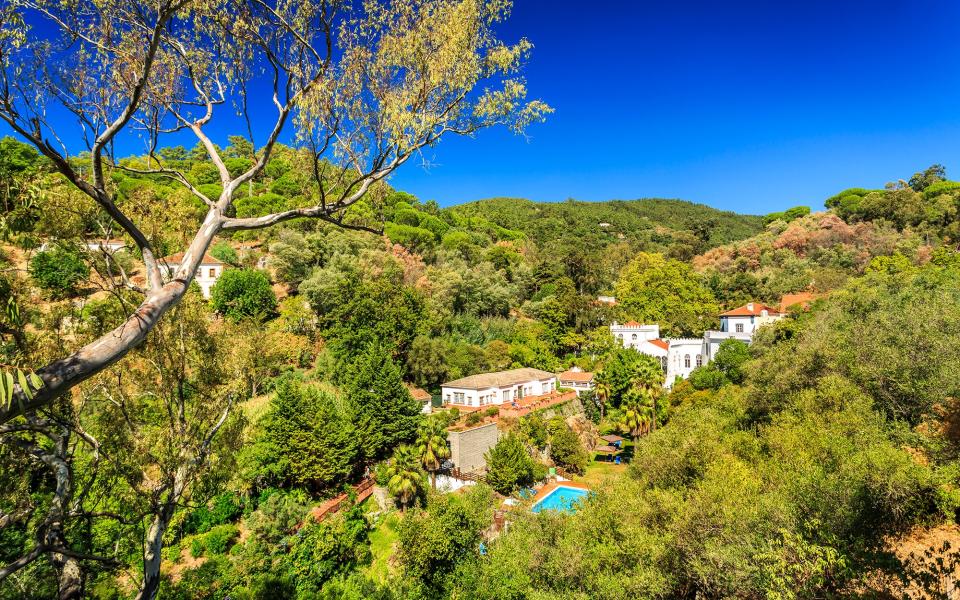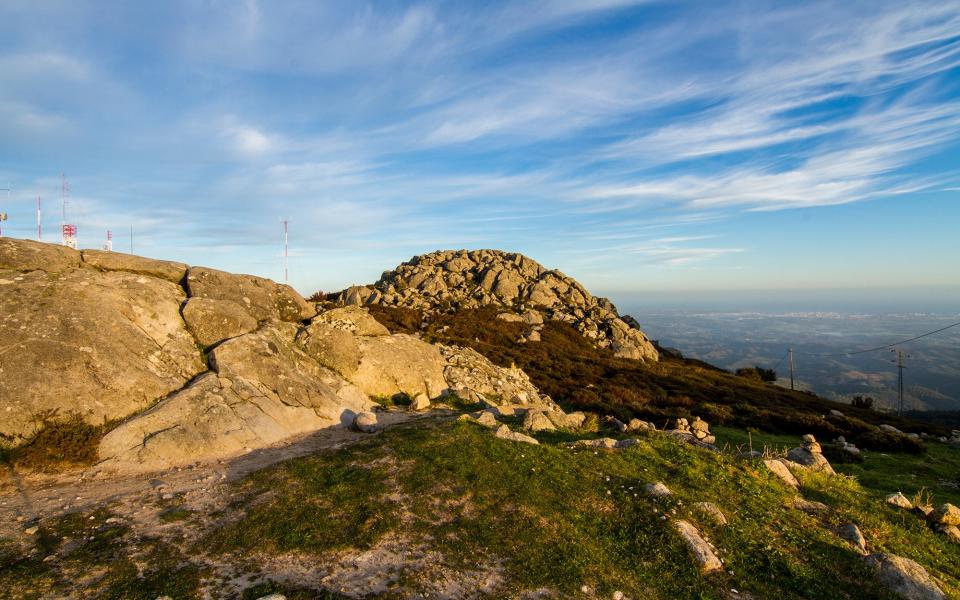The most scenic drives in the Algarve, from the coast to inland

You might think you only need a car to get to the beach and back but it really is worth turning off the beaten track to see the hidden Algarve in all its beauty.
Inland, there are groves of cork trees, olive trees with storks nesting on them and white-washed villages, covered with deep pink bougainvillea, where men with weathered faces and flat caps fill the cafés in the main square. Drive along the coast, and you will pass field after field of wild flowers, tiny stone chapels and views of the blue sea at every turn, a drive worth dallying over.
For further Algarve inspiration, see our guides to the city's best hotels, restaurants, nightlife, things to do and beaches.
From Portimão to Fóia (15 miles)
This route takes you away from the Algarve’s busy coast and along country roads lined with brilliant mimosa trees and terraced valleys, through whitewashed villages where tiny shops on cobbled streets sell handicrafts and black-clad residents sit outside their doors. It winds to the highest point in the Algarve, 3,000ft above the sea, which sparkles in the distance on a clear day.
Start in Portimão and take the N124 towards Monchique. Just beyond Porto de Lagos, take the N266 at the roundabout and continue. On your right you will pass Parque da Mina (the Mining Museum: 00 351 282 911622; open daily), where there’s an iron-ore mine as well as a furnished 18th-century manor house and a farmhouse with goats, sheep and other animals.
Continuing on, the N266 brings you into the charming spa town of Caldas de Monchique, where people have been coming since Roman times in the hope the thermal waters will cure their rheumatic and digestive ailments and skin conditions. Stop at Café 1692 (00 351 282 910 910) in the main square, for its lovely terrace is a perfect place to try the local firewater, Medronho, distilled from the tiny red berries of the arbutus (strawberry tree) that grows on these hills.
From Caldas de Monchique, the climb begins in earnest, up through the volcanic mountain range, which provides shelter from the north and ensures the Algarve’s mild climate, and past spectacular meadows of wild flowers and chestnut and cork groves.

After four miles you reach Monchique, a small market town known for its handicrafts, honey and sausages. Best known of all its artisanal productions is the beautiful furniture, hand-painted with flowers and leaves, and the simple wooden scissor chairs (in Casa dos Arcos, Estrada Velha), which fold up and apparently date back to Roman times. Visit the 16th-century Igreja Matriz, the town’s church, on the cobbled Rua da Igreja behind the main square. It has a wonderful Manueline doorway with twisted columns resembling gnarled rope.
The last stretch takes you to Fóia, a few miles out of Monchique on the 266-3. From here you will be rewarded with the best views in the Algarve, back towards the sea. In nearby Ceiceira is Restaurante O Luar de Foia (00 351 282 911 149). Take a seat on the sunny terrace and order up some local food to enjoy in the clear mountain air.

From Lagos to Cape St Vincent (24 miles)
This journey crosses the wild and windswept western Algarve, with its endless beaches pummelled by the Atlantic, its huge Natural Park, its megaliths and its ancient whitewashed towns.
Start at Lagos, one of the most attractive towns in the Algarve, which has Roman remains, a beautiful 18th-century church, Igreja de Santo António, and a lively modern marina.
Join the westbound N125, towards Vila do Bispo/Sagres, and continue until you reach signs for Salema. This is a lovely beach to stop at, either for lunch (see Boia) or just to feel the sand between your toes. Fishermen still sit on the harbour walls here, mending their nets.
Return to the main road and continue towards Sagres. Between the villages of Figueira and Raposeira you will see a chapel set back from the road, with a brown 'monument' signpost indicating the Ermida de Nossa Senhora da Guadalupe (Chapel to the Virgin of Guadalupe; open May to Sept: 10.30am-1pm, 2pm-6.30pm; April to Oct, 9.30am-1pm, 2pm-5pm). A frequent visitor to this beautiful 14th-century chapel was Henry the Navigator (1394-1460), who had property in Raposeira, requesting perhaps the safe return of the ships he had sent out in search of spices and new lands.

In next-door Vila de Bispo, the whitewashed church, high above the road, is worth visiting for the magnificent blue and white azuleojos inside. If you stop for a meal, it’s likely to contain percebes (goose-neck barnacles), as they are harvested in abundance locally.
Drop back to the main road to cover the last seven miles to Sagres. If you are keen on prehistoric ruins, keep your eyes peeled for the menhirs (megaliths) that dot the countryside. At Sagres you will see a huge fort on the cliff tops, where Henry the Navigator reputedly had his school of navigation. A giant pebble wind compass is all that remains.
You will already feel you have reached the end of the world before you get to the rocky outcrop of Cape St Vincent. The landscape is austere, the cliffs dramatic and the sea noisy and unforgiving beneath. The Romans revered this spot, naming it Promontorium Sacrum, and sunsets here, still today, have a mystical magic.


